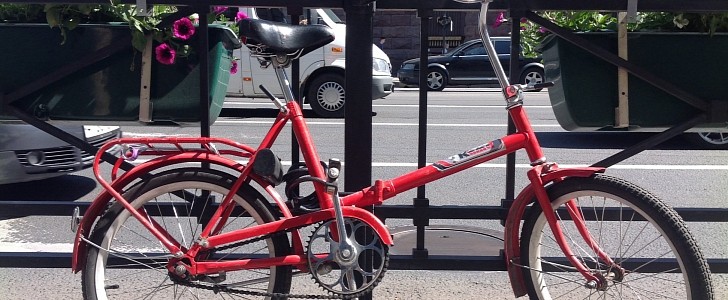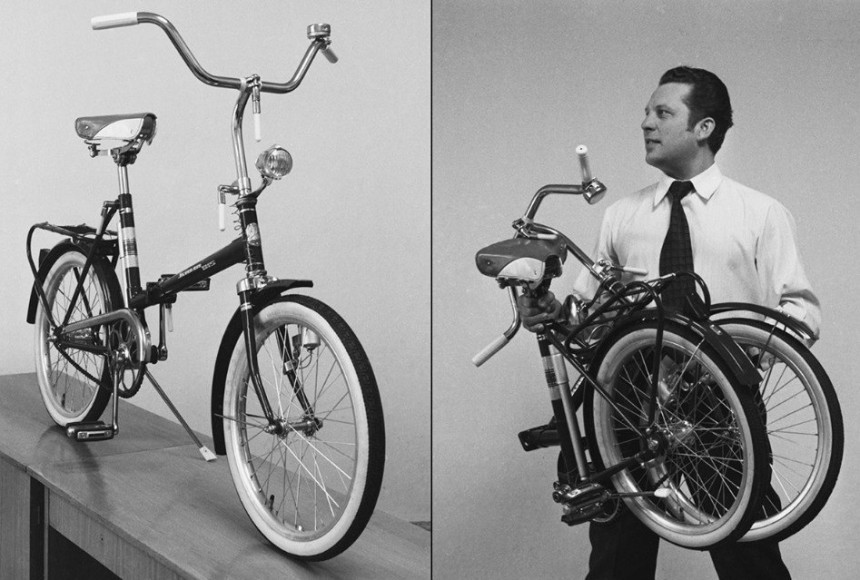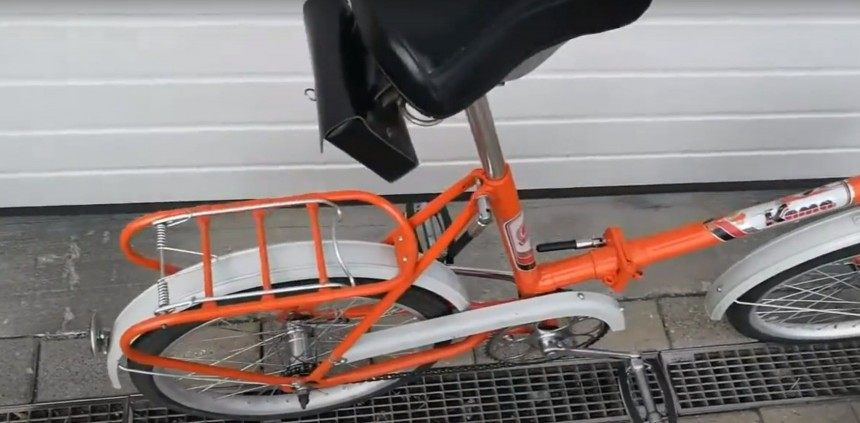Most people don't realize that the vehicles we see in our societies actually met their beginnings on a drawing board some time ago. Apparently, the same holds true for a Russian bicycle brand, Kama, and their folding bicycle design; step aside, Brompton.
Folks, the name Kama may not mean much to you, but for those growing up in Soviet Russia and nearby nations during the '70s, Kama is a familiar sight and sound. While a bicycle manufacturer from the USSR is nothing new, what's unique about the Kama and most of the bikes they designed and built is that they were foldable, helping owners easily throw one of these onto a bus or smaller vehicle. Heck, it even looks like you could pop one onto the rear of a motorcycle.
Personally, I was pressed hard to find much info about Kama and where it may have ended up. Nonetheless, this doesn't stop us from looking at their work and appreciating how ahead of its time it really was. Heck, the modern folding bike is considered one of the most valuable mobility solutions. Maybe the Kama is where Brompton got their inspiration. Who knows?
If you're to look up information about the Kama folding bike, there's very little, with most of the details stating that it was built during the mid-'70s and cost roughly 100 Soviet Rubles, which was a considerable amount back in those days.
Now, during the '70s, aluminum was mainly reserved for spacecraft and other aeronautical components and machines. Still, few bicycle garages were exploring alloy frames. This means you can expect the Kama to be built using steel. Nonetheless, according to Good Looks Lady, the average Kama only weighed around 14.6 kg (32.2 lbs) without any additional gear. That's not bad even by today's standards, not to mention the inherent properties of steel could have led to a relatively decent bike, but there were problems.
Because the USSR focused on mainly creating a machine they could land into the hands of as many citizens as possible, it was inherently equipped with sub-par components. It looks as though some aluminum may have made it onto the bike in the form of a crankset; not sure how much abuse that could have taken. Then again, the bike was meant for nothing more than your average road.
Another issue that owners seemed to face while owning a Kama was that the folding mechanism seemed to wear out rather quickly. Not only would this render the bikes useless, unless you have the obliques of a god, but it happens to be unsafe as well. Still, the Soviets pressed on.
Your usual complete bike included a plethora of features aimed at being a bit more than just your average machine. Fenders were added to help you stay clean while riding through the rain of rough terrain, a rack helped you carry essentials while keeping your hands free, and even a dynamo could be added to power a headlamp.
As I inspected this trinket with a keen eye, I noticed that a couple of other features were a part of its design. For example, not only does the frame fold, but so do the handlebars, and the seat can be removed. Kickstand, plastic pedals, and a spring suspension seat were part of the mix too.
Heck, the more I talk about this bike, the more I feel I'm talking about some freshly unveiled folding machine, a testament to how far ahead folks were thinking back in the old days. Personally, I find it odd that we're living in an age where we're bringing back technology that was obviously available in our past.
Personally, I was pressed hard to find much info about Kama and where it may have ended up. Nonetheless, this doesn't stop us from looking at their work and appreciating how ahead of its time it really was. Heck, the modern folding bike is considered one of the most valuable mobility solutions. Maybe the Kama is where Brompton got their inspiration. Who knows?
If you're to look up information about the Kama folding bike, there's very little, with most of the details stating that it was built during the mid-'70s and cost roughly 100 Soviet Rubles, which was a considerable amount back in those days.
Because the USSR focused on mainly creating a machine they could land into the hands of as many citizens as possible, it was inherently equipped with sub-par components. It looks as though some aluminum may have made it onto the bike in the form of a crankset; not sure how much abuse that could have taken. Then again, the bike was meant for nothing more than your average road.
Another issue that owners seemed to face while owning a Kama was that the folding mechanism seemed to wear out rather quickly. Not only would this render the bikes useless, unless you have the obliques of a god, but it happens to be unsafe as well. Still, the Soviets pressed on.
As I inspected this trinket with a keen eye, I noticed that a couple of other features were a part of its design. For example, not only does the frame fold, but so do the handlebars, and the seat can be removed. Kickstand, plastic pedals, and a spring suspension seat were part of the mix too.
Heck, the more I talk about this bike, the more I feel I'm talking about some freshly unveiled folding machine, a testament to how far ahead folks were thinking back in the old days. Personally, I find it odd that we're living in an age where we're bringing back technology that was obviously available in our past.













